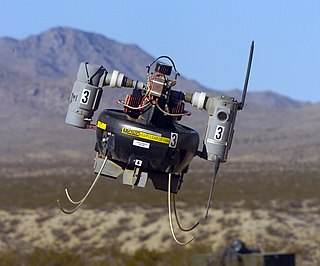 W
WA micro air vehicle (MAV), or micro aerial vehicle, is a class of miniature UAVs that has a size restriction and may be autonomous. Modern craft can be as small as 5 centimeters. Development is driven by commercial, research, government, and military purposes; with insect-sized aircraft reportedly expected in the future. The small craft allows remote observation of hazardous environments inaccessible to ground vehicles. MAVs have been built for hobby purposes, such as aerial robotics contests and aerial photography.
 W
WA robot competition is an event where the abilities and characteristics of robots may be tested and assessed. Usually they have to beat other robots in order to become the best one. Many competitions are for schools but several competitions with professional and hobbyist participants are also arising.
 W
WThe AeroVironment Nano Hummingbird or Nano Air Vehicle (NAV) is a tiny, remote controlled aircraft built to resemble and fly like a hummingbird, developed in the United States by AeroVironment, Inc. to specifications provided by the Defense Advanced Research Projects Agency (DARPA). The Hummingbird is equipped with a small video camera for surveillance and reconnaissance purposes and, for now, operates in the air for up to 11 minutes. It can fly outdoors, or enter a doorway to investigate indoor environments. It was announced to the public on 17 February 2011.
 W
WAn Entomopter is an aircraft that flies using the wing-flapping aerodynamics of an insect. The word is derived from entomo + pteron. Entomopters are type of ornithopter, which is the broader term for any device intended to fly by flapping wings.
 W
WThe Insectothopter was a miniature unmanned aerial vehicle developed by the United States Central Intelligence Agency's research and development office in the 1970s. The Insectothopter was the size of a dragonfly, and was hand-painted to look like one. It was powered by a miniature fluidic oscillator to propel the wings up and down at the proper rate to provide both lift and thrust. A small amount of propellant produced gas to drive the oscillator, and extra thrust came from the excess gas vented out the rear. The project was abandoned when the Insectothopter was found to be too difficult to control in crosswinds.
 W
WPerdix drones are the main subject of an experimental project conducted by the Strategic Capabilities Office of the United States Department of Defense which aims to develop autonomous micro-drones to be used for unmanned aerial surveillance.
 W
WThe Honeywell RQ-16A T-Hawk is a ducted fan VTOL miniature UAV. Developed by Honeywell, it is suitable for backpack deployment and single-person operation.